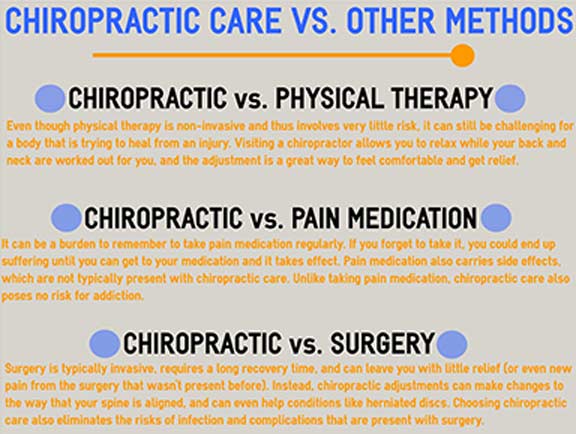The Top Daily Habits That Add To Pain In The Back And How To Stay Clear Of Them
The Top Daily Habits That Add To Pain In The Back And How To Stay Clear Of Them
Blog Article
Web Content Produce By-Snyder Svenningsen
Preserving correct pose and staying clear of usual risks in day-to-day tasks can significantly influence your back health and wellness. From exactly how you sit at your workdesk to how you raise hefty things, little adjustments can make a large distinction. Visualize click here without the nagging neck and back pain that impedes your every action; the service may be easier than you assume. By making a few tweaks to your day-to-day routines, you could be on your way to a pain-free presence.
Poor Stance and Sedentary Way Of Life
Poor pose and an inactive way of life are two major factors to back pain. When you slouch or hunch over while sitting or standing, you placed unnecessary stress on your back muscle mass and spine. This can result in muscle imbalances, tension, and at some point, chronic back pain. Additionally, sitting for long periods without breaks or physical activity can compromise your back muscles and lead to rigidity and discomfort.
To fight inadequate position, make a conscious initiative to rest and stand right with your shoulders back and lined up with your ears. Remember to maintain Read the Full Posting on the ground and stay clear of crossing your legs for prolonged periods.
Integrating regular extending and reinforcing exercises into your daily regimen can also aid enhance your posture and alleviate back pain associated with a less active way of living.
Incorrect Training Techniques
Improper lifting methods can substantially add to pain in the back and injuries. When you raise heavy things, bear in mind to flex your knees and utilize your legs to lift, rather than depending on your back muscle mass. Prevent twisting your body while training and keep the object near your body to reduce pressure on your back. lower back cramps to preserve a straight back and prevent rounding your shoulders while raising to prevent unnecessary pressure on your back.
Constantly evaluate the weight of the item prior to raising it. If it's too hefty, request aid or use devices like a dolly or cart to transfer it safely.
Remember to take breaks during raising jobs to provide your back muscle mass a chance to rest and stop overexertion. By executing correct training techniques, you can prevent pain in the back and minimize the danger of injuries, guaranteeing your back stays healthy and solid for the long-term.
Absence of Normal Workout and Extending
A less active way of life without normal workout and stretching can significantly add to pain in the back and pain. When you don't participate in physical activity, your muscle mass become weak and stringent, causing bad posture and raised stress on your back. Normal exercise helps enhance the muscle mass that sustain your spinal column, enhancing stability and decreasing the danger of back pain. Incorporating stretching into your routine can additionally improve flexibility, preventing stiffness and discomfort in your back muscles.
To prevent pain in the back triggered by an absence of exercise and stretching, aim for at the very least 30 minutes of modest physical activity most days of the week. Consist of exercises that target your core muscles, as a strong core can help reduce pressure on your back.
Furthermore, take breaks to extend and move throughout the day, particularly if you have a desk task. Simple stretches like touching your toes or doing shoulder rolls can assist ease tension and stop pain in the back. Prioritizing regular exercise and extending can go a long way in preserving a healthy and balanced back and decreasing discomfort.
Verdict
So, remember to sit up straight, lift with your legs, and stay energetic to avoid pain in the back. By making functional medicine doctor austin to your daily behaviors, you can stay clear of the discomfort and constraints that come with pain in the back. Care for your spinal column and muscles by practicing good posture, proper training methods, and routine exercise. Your back will thank you for it!
